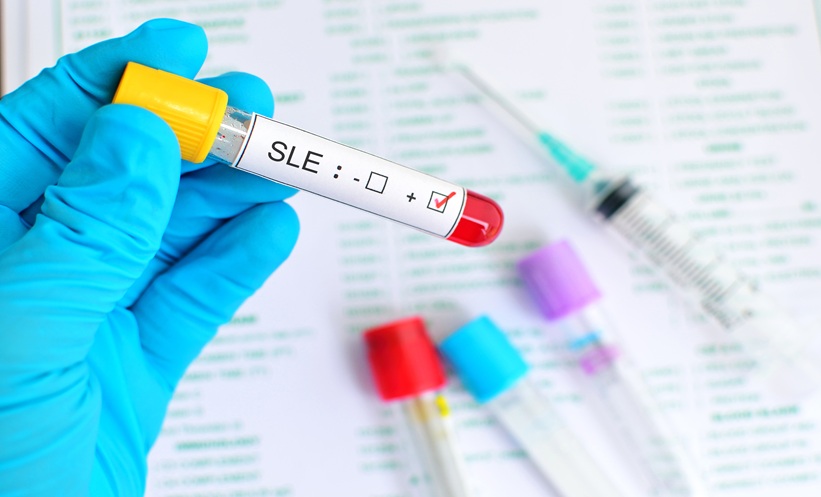Presenters: Laura C. Coates,¹ Iain B. McInnes,² Irene E. van der Horst-Bruinsma³
1. University of Oxford, UK
2. University of Glasgow, UK
3. Amsterdam University Medical Center, the Netherlands
Disclosure: Coates has received consulting fees from AbbVie, Amgen, Biogen, Bristol-Myers Squibb, Boehringer Ingelheim, Celgene, Domain, Eli Lilly and Company, Gilead, Janssen, Medac, Novartis, Pfizer, and UCB; and grant/research support from AbbVie, Amgen, Celgene, Eli Lilly and Company, Gilead, Novartis, and Pfizer. McInnes has received grant/research support from Bristol-Myers Squibb, Celgene, Eli Lilly and Company, Janssen, and UCB; consulting fees from AbbVie, Bristol-Myers Squibb, Celgene, Eli Lilly and Company, Gilead, Janssen, Novartis, Pfizer, and UCB. van der Horst-Bruinsma has received consulting fees from AbbVie, Eli Lilly and Company, MSD, Novartis, and UCB; and grant/research support from AbbVie, MSD, Pfizer, and UCB.
Acknowledgements: Medical writing assistance was provided by Megan Breuer of Excerpta Medica, Amsterdam, the Netherlands.
Support: The posters, presentations, and publication of this article were funded by Janssen. The views and opinions expressed are those of the speakers and not necessarily of Janssen.
Citation: EMJ Rheumatol. 2021;8[Suppl 3]:2-6.
Meeting Summary
Psoriatic arthritis (PsA) is a chronic, heterogeneous, immune-mediated arthritis characterised by joint inflammation and diverse clinical manifestations, including peripheral and/or axial joint disease, enthesitis, dactylitis, and psoriasis. In recent years, several effective biologic treatments for PsA, including TNF-inhibitors (TNFi), IL-12/23 inhibitors, IL-17 inhibitors, and IL-23 inhibitors, have been introduced. Inhibition of IL-12/23 in the PsABio trial using ustekinumab showed excellent efficacy and safety for sustained improvements in joint, skin, and soft tissue manifestations of PsA. Several studies are ongoing that examine the efficacy and safety of the monoclonal antibody guselkumab, which specifically binds to the p19 subunit of IL-23. In addition, the results of the Phase III DISCOVER-1, DISCOVER-2, and COSMOS trials with guselkumab indicated that selective inhibition of the IL-23 pathway is more efficacious while maintaining an equally high level of safety. However, earlier treatment, prior to the development of severe disease manifestations, may be necessary for optimal treatment effectiveness in female patients with PsA.
Efficacy and Safety of Guselkumab in Patients with Active Psoriatic Arthritis Who Demonstrated Inadequate Response to TNF- Inhibition: Results of a Phase IIIb Randomised, Controlled Study
Laura C. Coates
Guselkumab is approved to treat adults with moderate-to-severe plaque psoriasis and active PsA. Previously, in the pivotal Phase III PsA studies DISCOVER-1 (biologic-naïve/experienced patients) and DISCOVER-2 (biologic-naïve patients only), significantly higher proportions of patients receiving guselkumab achieved joint and skin responses at Week 24 of treatment, compared to patients receiving placebo.1,2 In the DISCOVER-1 trial, guselkumab efficacy was also consistent in a subgroup of patients who had previously been exposed to TNFi; patients with an inadequate response to TNFi represent a cohort with significant unmet treatment needs in PsA. This presentation examined the efficacy and safety of guselkumab treatment in patients with active PsA and inadequate responses to one or two previous TNFi treatments, as assessed in the Phase 3 COSMOS study.3
In this study, patients received guselkumab 100 mg subcutaneously (N=189) at Weeks 0, 4, then every 8 weeks thereafter (q8w). Patients in the placebo group (N=96) received subcutaneous placebo injections at Weeks 0, 4, 12, and 20, and crossed over to treatment with guselkumab 100 mg at Weeks 24, 28, 36, and 44 of treatment.4
The study met its primary endpoint where a significantly higher proportion of patients in the guselkumab group achieved American College of Rheumatology (ACR) 20% responses (ACR20) at Week 24 of treatment, compared with placebo (48.1% versus 19.8%, respectively; p<0.001). These improvements were consistent in the guselkumab-treated group, regardless of baseline patient and disease characteristics, and in patients with prior and concomitant medications. Furthermore, guselkumab was superior to placebo treatment at Week 24 for all secondary endpoints including ACR50, Psoriasis Area and Severity Index (PASI) 100, and change from baseline in Health Assessment Questionnaire Disability Index (HAQ-DI) and 36-Item Short Form Health Survey physical component summary score (SF-36-PCS). An additional benefit of guselkumab treatment was seen with an additional 6 months of treatment across the PsA domains, including assessments of physical function, health-related quality of life, complete skin clearance, joint response criteria, and resolution of dactylitis and enthesitis.Further results regarding the safety profile demonstrated a favourable risk–benefit profile through Week 56 of treatment. There were also no opportunistic infections, cases of active tuberculosis, anaphylactic/serum sickness-like reaction, confirmed inflammatory bowel disease, or death through 1 year of treatment with guselkumab.4
Taken together, the results of the COSMOS study through 1 year of treatment suggest a durable and sustainable impact of targeting the specific IL-23p19 subunit in patients with active PsA who have an inadequate response to TNFi. The safety profile was consistent with the established guselkumab profile in patients with psoriasis and patients with PsA who were biologic-naïve.4
Efficacy and Safety of Guselkumab, a Monoclonal Antibody Specific to the p19-Subunit of IL-23, Through 2 Years: Results from a Phase III Randomised, Double-Blind, Placebo-Controlled Study Conducted in Biologic-Naïve Patients with Active Psoriatic Arthritis
Iain B. McInnes
Previous results from the DISCOVER-2 trial demonstrated improvements in joint and skin symptoms and inhibition of structural damage progression through Week 24 and 1 year of treatment in biologic-naïve patients with active PsA.2,5 A favourable risk–benefit profile, as well as low rates of radiographic progression, were also observed through 1 year of guselkumab treatment given every 4 and 8 weeks (q4w and q8w respectively).5 This poster reported on the effects of guselkumab through 2 years in the DISCOVER-2 study.6
This study included 739 adults with active PsA despite previous exposure to standard non-biologic therapies. Patients were randomised 1:1:1 to receive treatment with guselkumab 100 mg q4w, given subcutaneously; or given at Week 0 and Week 4, then q8w; or to placebo, with a crossover to guselkumab 100 mg q4w at Week 24.6
The results showed that ACR response rates among guselkumab-treated patients increased at Week 24 and beyond and were maintained through Week 100 of treatment. A non-responder imputation analysis among patients receiving the q4w or q8w dose revealed that 76% and 74% achieved ACR20, 56% and 55% achieved ACR50, and 35% and 36% achieved ACR70, respectively, at Week 100 of treatment.6 Furthermore, 53–67% of patients receiving guselkumab achieved skin clearance (Investigator’s Global Assessment [IGA] 0 and PASI 100) and the majority achieved resolution of dactylitis (72% q4w, 83% q8w, 73% placebo through to q4w) and enthesitis (62% q4w, 70% q8w, 65% placebo through to q4w) through Week 100. Low rates of radiographic progression were observed through Week 100, regardless of guselkumab dosing regimen.6 The favourable risk–benefit profile demonstrated by data through Week 24 and Week 52 was also supported by the data with guselkumab treatment through Week 112.6
In conclusion, treatment with guselkumab 100 mg, given either q4w or q8w, demonstrated robust joint and skin response rates and maintenance of improved outcome measures from baseline through 2 years of treatment. Low rates of radiographic progression were also observed through 2 years, regardless of dosing regimen; guselkumab also exhibited a favourable risk-benefit profile throughout the 2-year period.6
Guselkumab Provides Sustained Domain-Specific and Comprehensive Efficacy as Assessed Using Composite Endpoints in Patients with Active Psoriatic Arthritis
Laura C. Coates
The DISCOVER-1 and -2 studies previously showed that guselkumab treatment every 4 or 8 weeks significantly improved signs and symptoms of joint and skin disease in patients with active PsA.1,2 Importantly, these improvements were maintained through Week 52.5,7 Composite indices combine patient-reported and physician-assessed outcomes across multiple domains of PsA and may be a more comprehensive assessment of disease activity. This poster assessed the maintenance of guselkumab efficacy through Week 52 in the pooled DISCOVER-1 (N=381) and DISCOVER-2 (N=739) studies utilising the following composite indices of disease activity: Disease Activity Index for PsA (DAPSA), Psoriatic Arthritis Disease Activity Score (PASDAS), and minimal disease activity (MDA).8
A significantly larger proportion of patients treated with guselkumab achieved DAPSA low disease activity (LDA) compared with placebo at Week 24 and already showed significant improvement in PASDAS LDA by Week 8.8 At Week 24, patients randomised to placebo crossed over to guselkumab, which resulted in a remarkable increase in the proportion of patients achieving DAPSA and PASDAS LDA. Furthermore, patients randomised to guselkumab who continued guselkumab maintenance treatment sustained their response through Week 52.8 At Week 52, 54.2% (q4w) and 52.5% (q8w) of guselkumab-treated patients and 46.0% of placebo crossover patients achieved DAPSA LDA, and 45.3% (q4w) and 41.9% (q8w) of guselkumab-treated patients and 36.8% of placebo crossover patients achieved PASDAS LDA.8 Comparable changes in MDA and very low disease activity (VLDA) were also observed and maintained through Week 52, with 35.9% (q4w) and 30.7% (q8w) of guselkumab-treated patients and 28.2% of placebo crossover patients who achieved MDA and 13.1% (q4w) and 14.4% (q8w) of guselkumab-treated patients and 8.3% of placebo crossover patients who achieved VLDA.8
In summary, patients who received guselkumab exhibited greater response rates for multiple composite indices compared with placebo through Week 24, with significant differences as early as Week 8. The maintenance data indicated continued improvement and sustained efficacy through Week 52. Furthermore, response rates increased in the placebo arm after crossover to guselkumab at Week 24. Thus, guselkumab induced robust and sustained efficacy and effectively treated diverse disease manifestations in patients with PsA.8
Female Versus Male Burden of Psoriatic Arthritis is Higher and Treatment Persistence Shorter After Ustekinumab or TNF-Inhibitor Treatment: 1-Year Data from the PsABio Study
Irene E. van der Horst-Bruinsma
The PsABio study9 was a prospective, observational, real-world study that evaluated the effectiveness, tolerability, and persistence of first-, second-, or third-line treatment with the IL-12/23 inhibitor ustekinumab, compared with TNFi, in adult patients with PsA.10 This particular study aimed to examine differences between male (N=399) and female (N=494) patients with PsA in treatment responses and disease severity during biologic therapy.11 The study participants had similar ages and disease duration at baseline. However, female patients had worse scores for clinical DAPSA (cDAPSA), HAQ-DI, pain, and comorbidities, and were often on later lines of biologic therapies, compared with males, at baseline.11
After 1 year of treatment, both sexes showed improvements in many disease features, including the composite endpoints. However, improvements and achievement of these endpoints were lower in females than in males. For example, while 38.6% of the total patient population achieved MDA (including VLDA), this was the case in only 27.5% of female participants, compared with 52.2% of the male participants. Furthermore, HAQ-DI scores remained worse in females at 1 year (0.95) compared with males at baseline (0.93); enthesitis resolution was achieved in 46% of females and 75% of males.11 There were no significant sex differences in treatment effectiveness between ustekinumab and TNFi after propensity score adjustment for imbalanced baseline characteristics.11 Analyses of treatment persistence revealed that persistence was significantly worse in female patients than in male patients; there were no intra-sex differences seen between ustekinumab and TNFi for the risk of stopping or switching treatments in male or female patients.11
Taken together, the results from this real-world analysis from the PsABio study suggest that female patients generally start biologic therapy with a higher degree of disease burden than males. Although improvements were seen with treatment in both sexes, female patients remained in comparatively worse health after 1 year of treatment. These results indicate that more comprehensive treatment prior to the development of severe disease manifestations may improve disease management in female patients with PsA.11
CONCLUSION
In the COSMOS study, treatment with the IL-23p19 inhibitor guselkumab resulted in improvements in several PsA-related joint and skin symptoms, dactylitis, enthesitis, and quality-of-life outcomes through 24 weeks, which increased through 1 year, compared with placebo, in patients with active PsA who had an inadequate response to TNFi, with no new safety signals. Data from the DISCOVER-2 trials showed that treatment with guselkumab, given either q4w or q8w, resulted in robust joint and skin response rates, as well as low rates of radiographic progression, through 2 years of treatment. The results of the PsABio study revealed that although treatment with the IL-12/23 inhibitor ustekinumab resulted in improvements in MDA, VLDA, and cDAPSA outcomes in male and female patients, earlier treatment, prior to the development of severe disease manifestations, may improve disease management in female patients with PsA, as these patients do not achieve the same improved health state as males.

![EMJ Rheumatology 8 [Supplement 3] 2021 Feature Image](https://www.emjreviews.com/wp-content/uploads/2021/09/EMJ-Rheumatology-8-Supplement-3-2021-Feature-Image-940x563.jpg)






